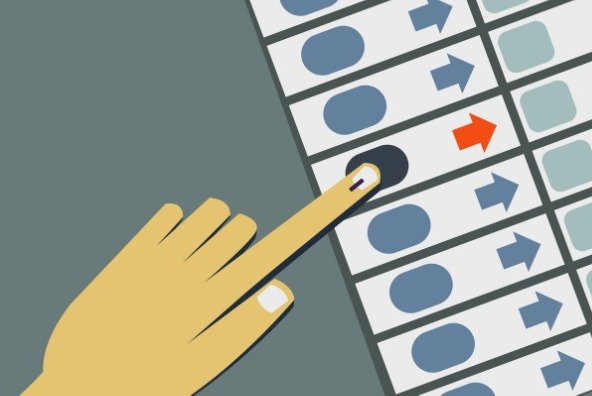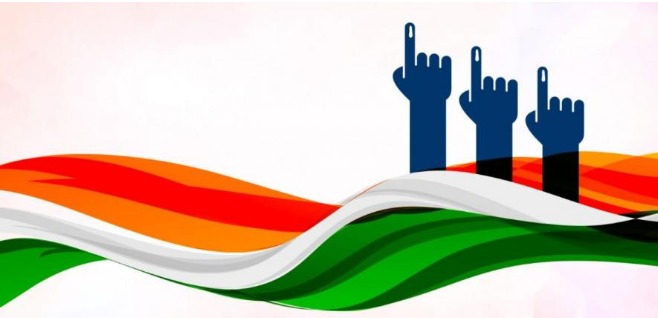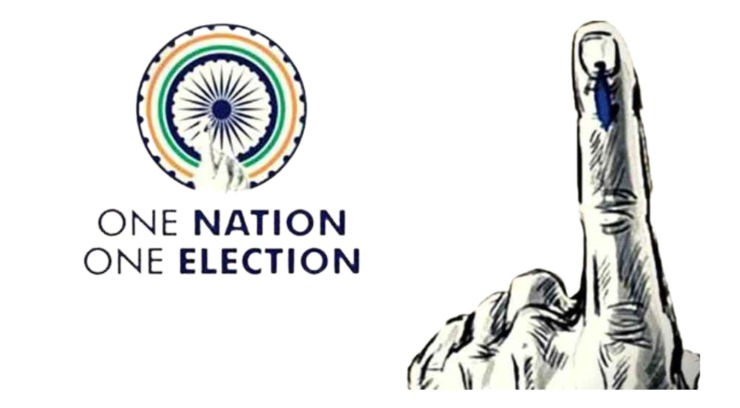INTRODUCTION
Harmonizing Elections: One Nation, One Election Emerges as a Pivotal Reform on the Central Government’s Agenda. The proposal for One Nation, one election currently under deliberation by the Indian Government, aims to synchronize elections for both the Lok Sabha and state assemblies. This initiative seeks to conduct these elections concurrently, either on a single day or within a designated timeframe.
The central government constituted a committee of seven, to make recommendations on simultaneous elections at each of the three levels of governance. This comes as a step taken by Prime Minister Narendra Modi towards fulfilling one of the ideas included in the 2014 election manifesto of his party. A parliamentary standing committee made recommendations on the issue of simultaneous polls in December 2015.
However, the committee had recommended conducting elections in two phases – one concurrent with Lok Sabha elections, the other in the mid-term of the Lok Sabha. It recommended simultaneous elections at two levels, not three. Now, the new committee is tasked with the legitimisation of simultaneous elections at the three levels of the Union, states, and local bodies.
The One Nation, One Election committee will meet soon to discuss, examine, and make recommendations for conducting simultaneous polls to Lok sabha, state assemblies municipalities, and panchayats.
THE COMMITTEE
This eight-member committee is headed by former President of India Shri Ram Nath Kovind. The committee will analyse and recommend possible measures for the simultaneous elections such as a hung assembly or adoption of a no-confidence motion. It will suggest a framework and a time frame within which the elections can be conducted.
This committee is comprised of Home Minister Amit Shah, former leader of the opposition Rajya Sabha Ghulam Nabi Azad, Congress Lok Sabha leader Adhir Ranjan Chowdhury( who has refused to be part of the committee), former chairman of 15th Finance Commission NK Singh, former Lok Sabha general secretary Subash Kashyap, senior advocate Harish Salve, former chief vigilance commissioner Sanjay Kothari.
TRACING THE ISSUE HISTORICALLY

Until 1967 elections were held simultaneously for state assemblies and the Lok Sabha. However, in 1968 and 1969, some of the legislative bodies were dissolved due to various reasons, and in 1970, the Lok Sabha was dissolved prematurely, which led to a change in the schedule of elections. Elections in India thus became a year-round ‘event management’. At least one election is conducted in the country each year.
The idea of one nation one election was first mooted in 1983 by the election commission. The 170th report (1999) of the Law Commission of India suggested comprehensive political, institutional, and electoral reforms along with measures to achieve the goal of holding simultaneous elections to Lok sabha and state assemblies.
A NITI Aayog paper in 2017 argued for ‘one nation one election’. It was argued that since in the parliamentary system, the legislative bodies do not have a fixed tenure, the two sets of elections could be conducted in two phases between the 2019 17th general election and the midterm of the 17th Lok Sabha in 2021, by adjusting the tenure of legislative assemblies of the state.
In case of a midterm dissolution of the Lok Sabha, “there could be a provision through which the president could carry out the administration with the help of a Council of ministers appointed by him until the next house is constituted.”
THE NEED OF SIMULTANEOUS ELECTIONS
Conduction of election is expensive. The budgeted cost of conducting elections in a state the size of Bihar is around Rs 300 crore. However, there are additional incalculable economic costs associated with it. During elections, the working of the government machinery is paused due to election duty and related work. Thus, the costs of the lost man-hours are not included in the election budget. In addition to this, election campaigning involves the distribution of freebies and other such measures to win over the voters.
A survey conducted by Jennifer Bussell, an assistant professor at the University of California shows that more than 90 per cent of national-level Indian politicians said their peers feel pressured to hand out gifts like cash, alcohol, etc. Other costs are incurred due to the diversion of personnel from sensitive areas, transportation of forces and their deployment at election booths also result in great invisible costs. Thus, holding elections altogether at the same time would help in curtailing such expenditures.
The other issue is that of policy paralysis. After the code of conduct is brought into force, no new policy can be announced and implemented. Thus the government’s machinery gets affected. Accordingly, one-time elections will ensure continuity in policies, projects, and programs of the central and state governments and the effective functioning of the government.
THE DRAWBACKS OF THE ONE NATION ONE ELECTION SCHEME
The major problem associated with conducting simultaneous elections is that it might lead to curtailment or extension of the term of present legislatures of the state to bring election dates at the same time as the rest of the country. This would lead to the undermining of democratic and federal principles. Conducting simultaneous elections may be unfavourable to regional parties as voters are likely to vote one way, giving the dominant party at the centre an upper hand.
In the first two decades after independence, most national leaders were those who took part in the struggle for independence and were mainly from the Congress party. However, the same period also saw the emergence of many regional leaders in the mid-seventies. l M Karunanidhi, Jyoti Basu, H N Bahuguna, and N T Rama Rao are examples of such leaders who had a strong influence at the national level too. Some regional leaders like Mamta Banerjee, P V Narasimhan Rao, Lalu Prasad Yadav, Deve Gowda, and Rama Krishna Hegde later became popular at the national level.
Thus, it is argued that if a strong national leader can overshadow a regional leader, the reverse is also equally true. A more recent example is of 2019 polls in the states of Andhra Pradesh, Arunachal Pradesh, Odisha, and Sikkim which were held simultaneously with national elections. The ruling party at the centre, the BJP (NDA) won only in Arunachal Pradesh. In Andhra Pradesh, it could not win a single seat.
So, any presumption that ‘One nation, One election’ will confuse voters into making wrong choices is incorrect. One important benefit of conducting more than one election in five years, as the current practice is, is that it also enhances the accountability of the politicians. This accountability is likely to be restricted if elections at all levels are held together.
CONCLUSION

We can see that the concept of ‘one nation one election‘ is not entirely new and is being discussed in India. The practice was prevalent until 1970. But to bring this practice back with conducting simultaneous elections to Lok Sabha, state assemblies, panchayats, and municipalities is a tough road to walk on.
On the one hand, there is a danger of compromise with the essence of federalism, which is also one of the basic structures of the constitution, due to curtailment or extension of tenure of state assemblies.
On the other hand, people fear that it would bring back the era of one-party dominance. The committee constituted to make recommendations for conducting simultaneous elections has to walk on a tightrope to ensure that along with the various benefits that this practice of simultaneous elections brings to the table, it does not undermine the principles of democracy and ensures a fair chance to regional parties as well as voters.
Malya Singh
MUST READ: A CORNERSTONE TO LEGAL GENDER EQUALITY: WOMEN’S RESERVATION BILL, 2023


